Introduction
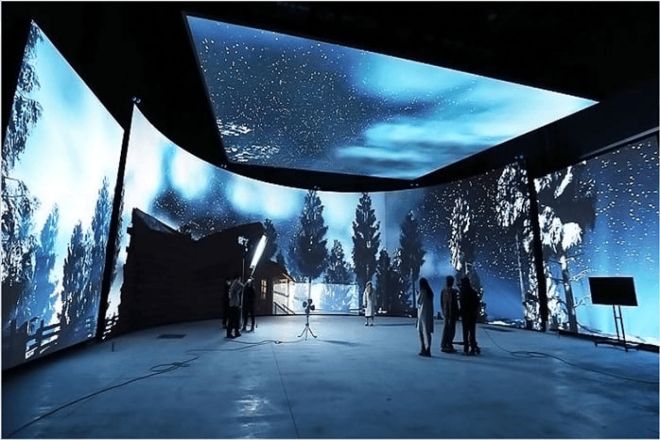
With the rapid development of science and technology, extended reality (XR) technology and LED displays, two cutting-edge technologies, are profoundly changing our lifestyle and visual experience.
XR technology provides users with an unprecedented experience with its unique immersion and interactivity, while LED displays, with their high brightness, high contrast, high color saturation, and other characteristics, are widely used in various display scenarios.
This article will discuss the application of XR technology and LED displays and their future development.
1. Overview and applications of XR technology
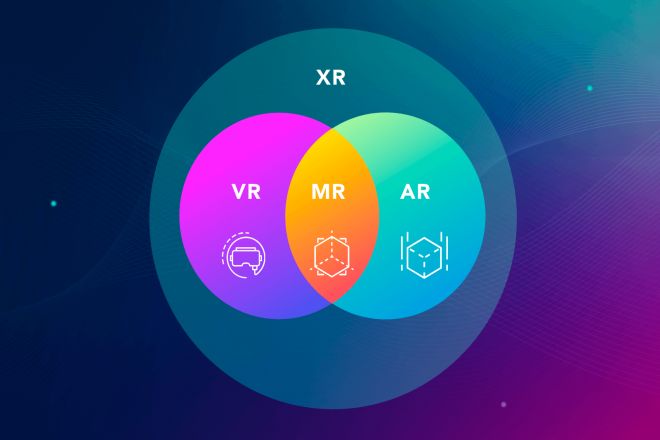
XR, or extended reality, is a collective term that covers all human-computer interaction technologies that combine real and virtual environments. Its main types include:
VR (Virtual Reality): This is an advanced technology that uses computer technology to create and experience virtual worlds. In VR, users are completely immersed in a computer-generated virtual environment and gain an immersive experience by interacting with the virtual world.
AR (augmented reality): AR technology superimposes virtual information into the real world. Users can see computer-generated virtual objects or information while seeing the real environment. This technology enables the real world and the virtual world to be seamlessly integrated, providing users with a richer and more intuitive way of displaying information.
MR (Mixed Reality): MR is a further integration of VR and AR technologies. It combines elements of the real world and the virtual world to create a brand-new environment in which users can interact. In MR, virtual objects and real objects can coexist and interact with each other, providing users with a more natural and realistic experience.
XR technology has a wide range of applications, and its unique immersive and interactive characteristics make it play an important role in many fields.
- Education field:
XR technology has brought revolutionary changes to education. By creating scenes such as virtual classrooms, laboratories, and museums, students can engage in hands-on and observational learning in a safe, controlled environment.
At the same time, XR technology can also provide rich learning resources and interactive learning methods, stimulate students’ interest in and enthusiasm for learning, and improve learning effects.
- Entertainment field:
XR technology brings unprecedented experience to the gaming film and television industries. In the game, players can be completely immersed in the virtual world, interact with game characters and the environment, and obtain a more realistic and exciting experience.
In film and television production, XR technology can realize real-time rendering and synthesis of special effects, bringing more shocking visual effects to the audience.
Increasingly used in the medical field. Doctors can use VR technology for surgical simulation training to improve surgical skills and safety.
At the same time, AR technology can assist doctors in remote diagnosis, treatment, and surgical operations, improving the efficiency and accuracy of diagnosis and treatment. In addition, XR technology can also be used in patients’ rehabilitation training and psychological treatment.
- Industrial field:
In the field of industrial design and manufacturing, XR technology can help engineers conduct product design and simulation testing in a virtual environment, reducing the cost and time of physical production.
At the same time, XR technology can also be used in factory maintenance and management to improve production efficiency and quality.
2. Technical characteristics and applications of LED display screens
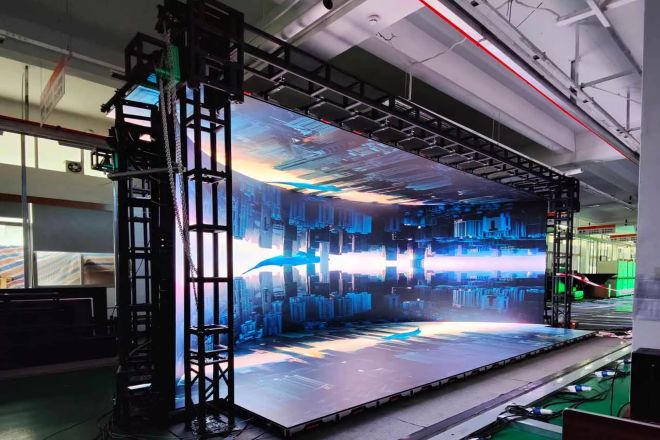
As an important display technology, the LED display screen has technical characteristics mainly reflected in the following aspects:
First of all, the LED display screen has high brightness characteristics. Whether it is an outdoor environment with direct sunlight or a brightly lit indoor place, the LED display can maintain high brightness to ensure that the picture is clearly visible without problems such as blur or reflection.
Secondly, LED displays have high contrast. This makes the picture clear and layered, and whether it is text, images, or videos, it can present rich details and a three-dimensional sense.
Furthermore, the color performance of the LED display is also very good. Its high color saturation makes the colors bright and highly restored and can truly reproduce the color effects of the original picture, giving the audience a more realistic visual experience.
Finally, LED displays are customizable. According to actual needs, displays of different sizes and shapes can be customized to meet the needs of various occasions and applications. This flexibility makes LED displays widely used in various fields.
LED display screens have a wide range of applications in various fields due to their unique technical characteristics.
In the field of commercial advertising, LED display screens are the first choice for outdoor billboards and display screens in shopping malls. Its high brightness, high contrast, and high color saturation make the advertising screen more attractive and can effectively enhance the brand image and publicity effect.
In sports events, LED displays are usually used at large-scale event sites to broadcast game images, scores, statistics, etc., in real-time. This not only improves the viewing experience but also provides viewers with more event information.
In terms of public information display, LED displays are widely used in public places such as transportation hubs and convention and exhibition centers. Through the display screen, traffic information, weather forecasts, news information, etc., can be released in real-time to facilitate the public obtaining the information they need.
In addition, LED displays also have unique applications in the field of artistic creation. Through programming and control, LED displays can present various dynamic and static works of art, such as LED art installations and light shows, adding a unique style to the city night scene.
3. Integration application of XR technology and LED display
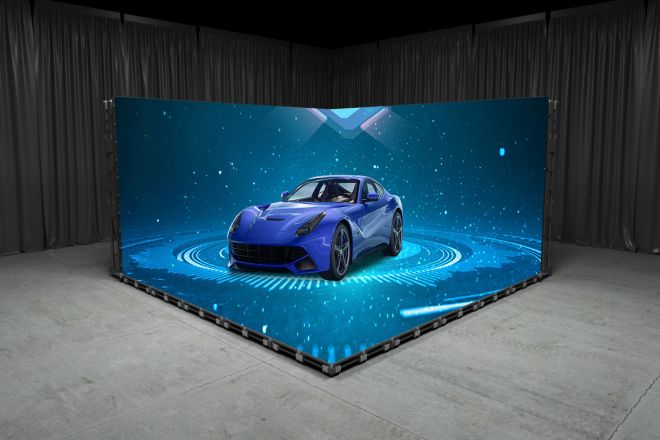
- How XR technology is implemented on LED displays
The integrated application of XR technology and LED display has brought revolutionary changes to modern visual displays. The implementation of this integration mainly relies on two technologies: projection mapping and transparent LED displays.
First, through projection mapping technology, XR content can be presented on the LED display in real-time. This technology uses projection equipment to project virtual images or scenes onto the surface of the LED display. Through precise calibration and synchronization, the virtual content is perfectly integrated with the display, bringing an immersive visual experience to the audience.
Secondly, AR effects can be achieved using transparent LED displays. The transparent LED display has a special transparent design, allowing viewers to see the real environment behind the display; by superimposing virtual content onto the display and integrating it with the real environment behind it, stunning AR effects can be created, making the audience feel as if they are in a world that combines reality and reality.
- Fusion application cases
The integrated application of XR technology and LED displays has achieved remarkable results in many fields. The following are some specific cases:
The first is the interactive exhibition. In exhibition venues such as museums and art galleries, combining XR content with LED displays can create an immersive exhibition experience.
Audiences can interact with virtual content by wearing XR devices, while the LED display displays relevant background information or virtual scenes, bringing a richer and more in-depth exhibition experience to the audience.
Next is virtual concerts. Using XR technology and LED displays, virtual singers can interact with the audience. At the concert, projection mapping technology was used to present the image of the virtual singer on a huge LED display, allowing real-time interaction with the audience.
At the same time, the use of AR technology can also bring personalized virtual experiences to the audience, such as virtual props, special effects, etc., making the concert more vivid and interesting.
Finally, there is business promotion. Through the combination of XR technology and LED displays, companies can create more creative and attractive commercial promotion activities.
For example, in shopping malls or outdoor billboards, LED displays should be used to display XR content to attract customers’ attention. At the same time, through interactive experiences, virtual try-ons, and other methods, customers can have a deeper understanding of products or services and enhance brand image and appeal.
4. Future development trends and prospects
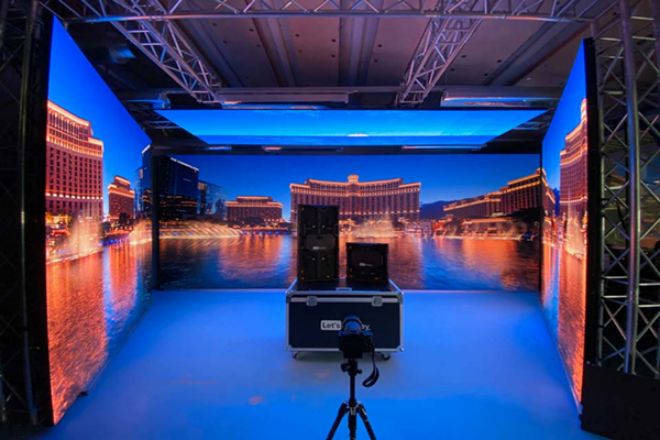
- Technological innovation promotes the integrated development of XR and LED displays.
With the rapid development of science and technology, the integrated application of XR technology and LED displays will continue to be driven by technological innovation in the future.
First of all, XR devices will usher in higher resolution and wider viewing angles, which means that virtual scenes will be more delicate and realistic, bringing users a more immersive experience.
At the same time, the research and development of new LED display technologies will continue to make breakthroughs, such as flexible LED displays and transparent LED displays, which will provide more diverse and innovative ways to display XR content.
- Application scenario expansion and cross-border cooperation
The integrated application of XR technology and LED displays will be expanded in more fields. In the field of smart homes, through the combination of XR technology and LED displays, people can create a more intelligent and personalized home environment.
In the field of intelligent transportation, XR technology can be applied to vehicle-mounted display systems to provide richer and more intuitive traffic information.
In addition, XR technology and LED displays will also cooperate in-depth with film, television, gaming, and other industries to jointly develop innovative applications and bring a more shocking and realistic visual experience to the audience.
- Challenges and issues faced
Although the integration of XR technology and LED displays has broad application prospects, it also faces some challenges and problems.
First, technical standards and compatibility issues need to be addressed to ensure seamless connectivity and interoperability between different devices and systems. Secondly, data security and privacy protection are also issues that must be paid attention to.
With the popularization and application of technology, the security and privacy protection of user data will become an important focus.
Finally, the balance between user experience and cost is also an issue that needs to be considered. How to reduce the cost of technology applications while ensuring high-quality user experience will be an important issue for future development.
Conclusion
XR technology and LED display screens, as two cutting-edge technologies, have achieved remarkable application results in their respective fields. With the continuous advancement of technology and the in-depth exploration of integrated applications, they will bring us a richer and more immersive visual experience.
Finally, if you want to know more about LED displays, please get in touch with us.
